Cutting Downtime in Canada: How Pallet Changing Machines Help
Your production line is the heart of your business. It runs smoothly, products are moving, and schedules are being met. Then, suddenly, everything stops. The cause is simple but frustrating: a broken, damaged, or incorrect pallet. Now, your team has to manually unstack and restack an entire load. This process is slow, risky, and expensive. Every minute your line is down, you are losing money and falling behind. In the competitive Canadian market, these small delays add up to a major problem, affecting everything from shipping deadlines to customer satisfaction.
Pallet changing machines help cut downtime in Canada by automating the transfer of goods from one pallet to another. This technology eliminates the slow, labor-intensive process of manual handling, which is often a major bottleneck. By quickly and safely swapping damaged or non-compliant pallets for suitable ones, these machines ensure that your production and logistics flows remain uninterrupted. This directly boosts operational efficiency, reduces labor costs, and minimizes the risk of product damage or worker injury associated with manual restacking.
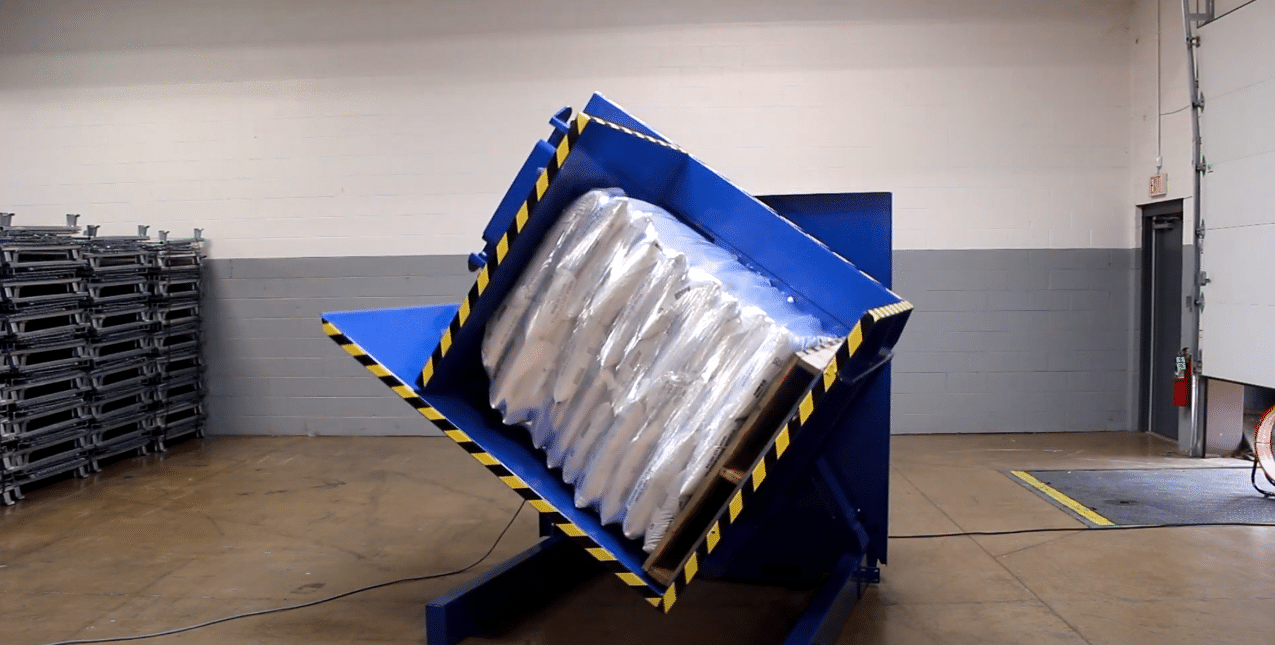
This solution seems straightforward, but I know leaders like you need more than just a simple answer. You need to understand the real impact on your operations, your team, and your bottom line. As an engineer who has built a business from the ground up, I understand that every investment must be justified. We need to look deeper into how this equipment solves specific challenges faced by businesses across Canada, from warehouses in Vancouver to manufacturing plants in Ontario. Let's break down the tangible benefits.
How Do Pallet Changers Reduce Manual Labor and Handling Errors?
Your team is skilled, but they are human. Manually moving heavy loads from one pallet to another is physically demanding and repetitive. This leads to fatigue, which is a direct cause of mistakes. A dropped box, a damaged product, or an improperly stacked pallet can all cause further delays and costs. You are relying on manual labor for a task that is slow, inefficient, and carries a high risk of error. This not only slows down your entire operation but also puts your employees at risk of strain and injury.
A pallet changer machine reduces manual labor by taking over the entire transfer process. It securely clamps the load, rotates or pushes it, and allows an operator to swap the pallet in under a minute. This removes the need for your team to handle individual items. As a result, handling errors like product damage from drops or incorrect stacking are virtually eliminated. Your team can be reassigned to more valuable tasks, and your process becomes faster, more reliable, and much safer.
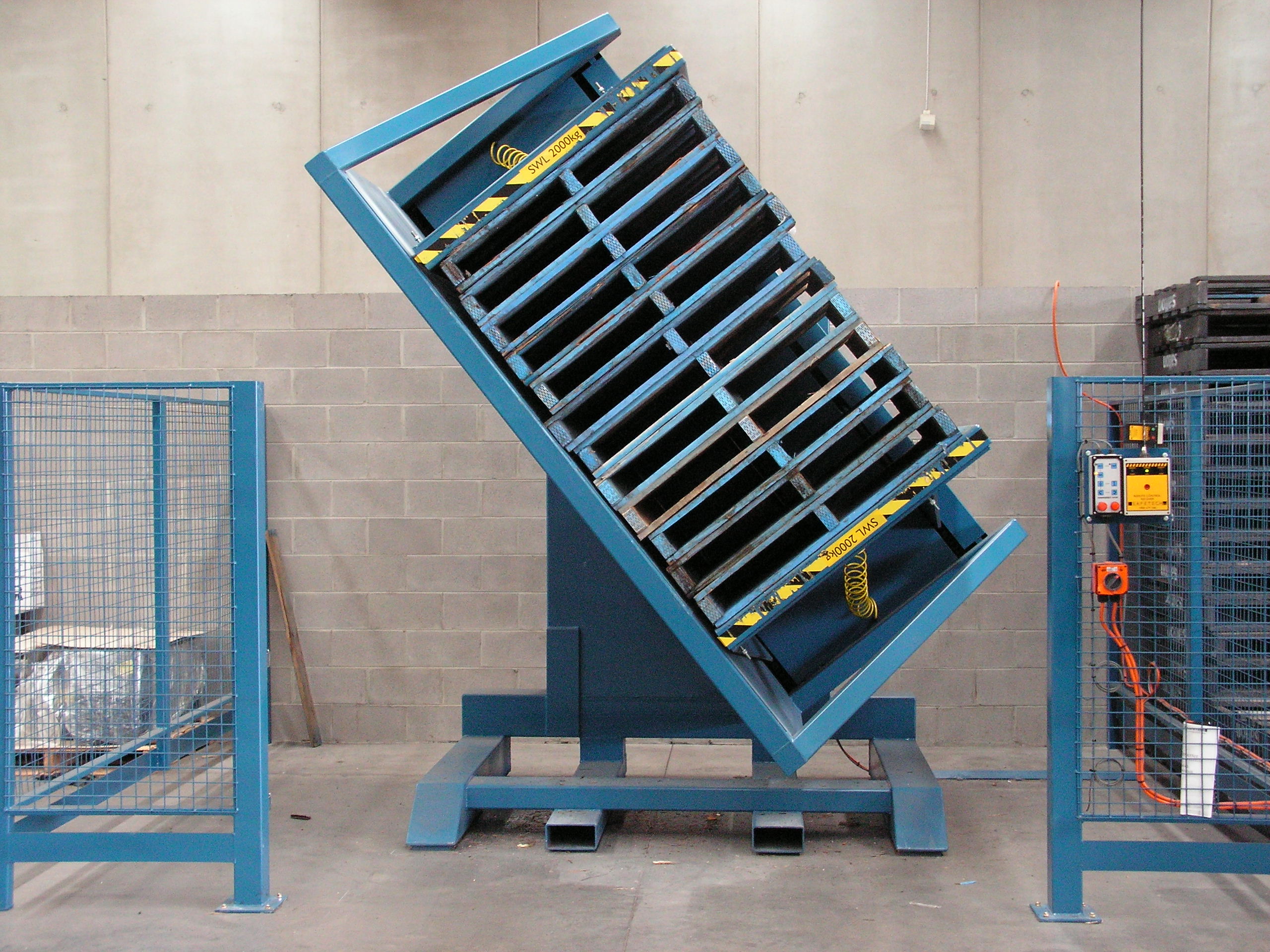
A Deeper Look at Operational Efficiency
When we talk about reducing manual labor, we are really talking about increasing operational efficiency. In my early days as an engineer, I saw firsthand how a single, inefficient process could create a bottleneck that affected the entire facility. Manual pallet swapping is a classic example of such a bottleneck. Let's break down the impact.
First, consider the time saved. A manual transfer of a full pallet load can take two workers anywhere from 15 to 30 minutes, depending on the product. A pallet changer does the same job in about 60 seconds with one operator. If you need to swap 20 pallets a day, you are saving hours of labor. This time can be redirected to quality control, order picking, or other tasks that add real value to your business.
Second, let's analyze the reduction in errors. Manual handling is inconsistent. The way a load is restacked at 8 AM is different from how it's done at 4 PM when workers are tired. This inconsistency leads to unstable loads, which are a safety hazard and can lead to product damage during transit. Automation standardizes the process. Every load is handled the same way, ensuring stability and protecting the integrity of your products.
Here is a simple comparison:
| Metric | Manual Pallet Swapping | Automated Pallet Changer |
|---|---|---|
| Time per Pallet | 15-30 minutes | ~1 minute |
| Operators Needed | 2 | 1 |
| Risk of Product Damage | High | Low |
| Risk of Worker Injury | High (strains, sprains) | Minimal |
| Process Consistency | Low | High |
For a business operating in Canada, where labor costs are significant, the financial argument is compelling. You are not just saving minutes; you are reallocating your most expensive resource—your people—to tasks where their skills are better used. This shift from manual labor to automated efficiency is a key step in modernizing any logistics or manufacturing operation.
What Is the Real Cost of Downtime in a Canadian Warehouse?
You see an idle production line and you know it's costing you money. But the true cost of downtime goes far beyond the wages of idle workers. It's a creeping expense that affects your entire business. When a shipment is delayed because you had to manually handle a pallet issue, you might have to pay for expedited freight to meet a deadline. This is a direct hit to your profit margin. Worse, if you miss that deadline, you risk damaging your relationship with a key customer. In a competitive market, reputation is everything.
The real cost of downtime is a combination of direct and hidden expenses that can cripple your profitability. Direct costs include lost production, wasted labor, and potential overtime pay to catch up. The hidden, indirect costs are often more damaging. They include reputational harm, decreased employee morale, and the stress placed on other parts of your operation as they try to compensate for the delay. Every minute of unplanned stoppage has a ripple effect across your entire Canadian operation.
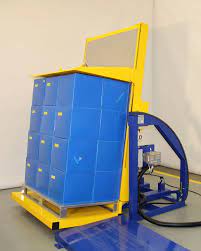
Quantifying the Financial Impact
As a factory owner, I live and breathe numbers. I believe in making decisions based on data. So, let's quantify the cost of downtime in a way that relates directly to your balance sheet. The goal isn't just to understand the problem, but to see the clear financial benefit of the solution.
First, let's establish a simple formula for direct costs.
Cost of Downtime = (Hours of Downtime) x (Lost Revenue per Hour + Labor Cost per Hour)
Imagine your facility generates $10,000 in revenue per hour and your hourly labor cost for the affected line is $1,000. Just 30 minutes of downtime from a single bad pallet costs you $5,500. If this happens even a few times a week, the numbers quickly become alarming.
But the direct costs are only the tip of the iceberg. The indirect costs are where the real danger lies. I've worked with companies across Canada, from the fisheries in the Maritimes to the manufacturing hubs in Quebec, and these indirect costs are universal.
Let's break them down in a table:
| Indirect Cost Category | Description & Impact in Canada |
|---|---|
| Reputational Damage | A missed delivery to a major retailer like Loblaws or Canadian Tire can lead to penalties and loss of future orders. Canada's business community is tight-knit; a reputation for unreliability spreads fast. |
| Expedited Freight | Canada is a huge country. If a shipment from Calgary misses its window, getting it to Toronto on time requires expensive air freight or dedicated trucking, erasing your profit. |
| Employee Morale | Constant, frustrating stops and starts are demoralizing. It makes your team feel that the process is broken. This leads to lower engagement and higher turnover, which is costly in a tight labor market. |
| Supply Chain Disruption | Your downtime doesn't just affect you. It affects your customer, and potentially their customer. This can cause a chain reaction of delays that further harms your business relationships. |
A pallet changer directly attacks both direct and indirect costs. By reducing downtime from hours to minutes, it protects your revenue and labor costs. More importantly, it creates a reliable, predictable operation. This reliability is what builds a strong reputation and allows you to operate efficiently across the vast Canadian landscape. It turns an unpredictable expense into a controlled, minimal part of your day.
How Can a Pallet Changer Improve Workplace Safety in Canada?
A safe workplace is a productive workplace. You know that workplace injuries are devastating for both the employee and the company. The problem is that many common warehouse tasks, like manually restacking pallets, are invitations for injury. Lifting heavy boxes repeatedly leads to back strains, sprains, and other musculoskeletal injuries. These are among the most common and costly workplace injuries in Canada, leading to worker compensation claims, lost time, and a drop in team morale. You are not just facing the financial cost of a claim, but also the operational disruption of losing a skilled team member.
A pallet changer improves workplace safety by removing the primary cause of these injuries: the manual lifting. The machine does all the heavy work. An operator simply uses controls to secure and move the load. This change transforms a high-risk manual task into a low-risk, machine-assisted process. By designing the risk out of the system, you create a safer environment, reduce your exposure to costly injury claims, and show your team that you value their well-being. This is a critical step for any company operating under Canada's strict occupational health and safety regulations.
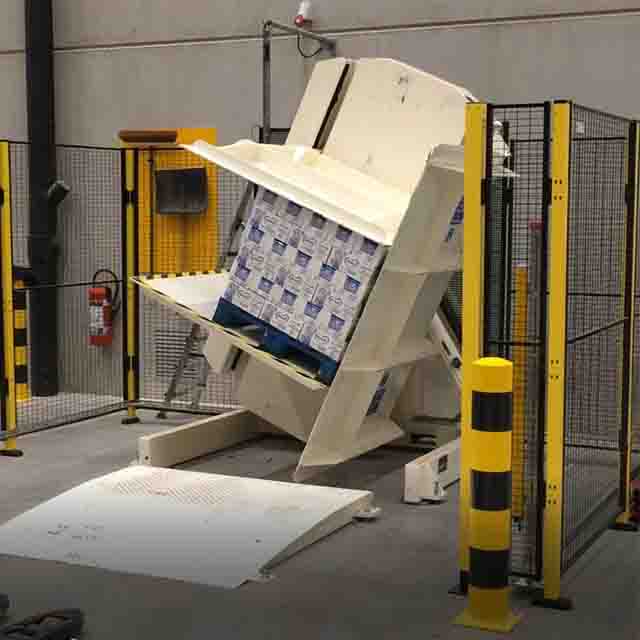
Beyond Compliance: Building a Culture of Safety
Meeting safety regulations is the minimum requirement. Great companies, however, aim higher. They build a true culture of safety. In my experience helping businesses grow, I've seen that a strong safety culture is a competitive advantage. It leads to higher productivity, better employee retention, and a stronger brand. A pallet changer is a powerful tool in building that culture.
Let's look at the specifics. The most common injuries from manual pallet handling are:
- Lower Back Strain: From repetitive bending and lifting.
- Shoulder and Neck Injuries: From reaching and lifting objects above shoulder height.
- Cuts and Bruises: From sharp edges, splinters from wooden pallets, or dropped items.
- Slips, Trips, and Falls: From working around disorganized stacks of goods during a manual transfer.
A pallet changer mitigates every single one of these risks.
The Ergonomic and Psychological Impact
Ergonomics is the science of designing the job to fit the worker, not forcing the worker to fit the job. Manual pallet handling is poor ergonomic design. A pallet changer is excellent ergonomic design. It places the operator in a position of control, not physical strain.
| Safety Factor | Manual Handling | With a Pallet Changer |
|---|---|---|
| Physical Strain | Very High | Very Low |
| Risk of Repetitive Stress Injury | High | Eliminated |
| Control over Load | Low (dependent on strength) | High (mechanical control) |
| Operator Posture | Poor (bending, twisting) | Good (standing at a control panel) |
There is also a psychological benefit. When employees see you investing in equipment that makes their job safer and easier, it sends a powerful message. It tells them they are valued. This improves morale and loyalty far more than any poster on a wall. In Canada, where finding and keeping skilled labor can be a challenge, creating a positive and safe work environment is key to long-term success. The investment in a pallet changer pays dividends not just in reduced WCB premiums, but in a more stable, committed, and productive workforce.
What Should I Look for When Choosing a Pallet Changer for My Canadian Facility?
You are convinced that a pallet changer is the right move, but now you face a new challenge: choosing the right one. The market is full of options, and buying the wrong machine is as bad as having no machine at all. You might choose a model that can't handle your product's weight, or one that doesn't fit in your limited floor space. Making the wrong choice leads to more downtime and frustration, wasting the very investment you made to solve the problem. Your facility in Canada has specific needs related to climate, product type, and workflow, and a generic solution won't work.
When choosing a pallet changer for your Canadian facility, you must look beyond the base price. Focus on four key areas: load capacity and type, operational footprint, level of automation, and after-sales support. Ensure the machine’s capacity exceeds your heaviest load. Measure your available space and choose a model—be it a freestanding inverter or an inline system—that fits. Decide if you need a simple push-button operation or full integration with your existing conveyor systems. Finally, partner with a supplier who offers strong technical support and parts availability in Canada.
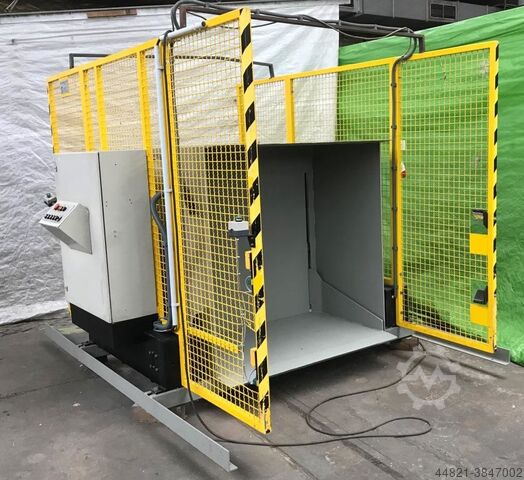
A Practical Checklist for Your Investment
As an engineer, I believe in checklists. They prevent mistakes and ensure you cover all critical points. When I consult with clients like you, I walk them through a decision matrix. It's about finding the perfect fit between the technology and the application. Let’s create a checklist you can use for your own evaluation.
My Insight: The Hidden Benefit of Operational Flexibility
Over my years in this industry, I have seen companies install pallet changers for all the reasons we've discussed: speed, safety, and cost reduction. These are all valid and important. But I want to share a benefit that my most successful clients, leaders like Javier, discover after the fact. It's the hidden advantage of operational flexibility.
A pallet changer is not just a tool for fixing problems like broken pallets. It is a strategic tool for creating opportunities. Think about it. What if you could receive goods on cheap, one-way pallets and seamlessly transfer them to your high-quality, in-house plastic pallets for use in your automated storage and retrieval system (AS/RS)? This saves a huge amount of money on pallet purchasing.
What if a major customer in the food industry requires you to ship on plastic pallets for hygiene reasons, but your goods arrive from your supplier on wood? Without a pallet changer, this is a massive manual handling job. With one, it's a simple, fast process. You can now say "yes" to that customer's requirements without hesitation. This ability to adapt quickly to customer needs, supplier standards, or internal processes is what sets market leaders apart. It transforms your logistics from a rigid system into a flexible, responsive asset. This flexibility is the true, long-term ROI that often gets overlooked in the initial analysis. It's what helps a business not just survive, but thrive.
Key Questions to Ask a Potential Supplier
| Category | Key Questions | Why It Matters for Canada |
|---|---|---|
| 1. Load & Application | What is the maximum weight you need to handle? What are the dimensions of your loads? Are your products fragile, boxed, or bagged? | Your supplier must understand your specific product. A machine for bags of salt in Nova Scotia is different from one for sensitive electronics in Markham. |
| 2. Machine & Footprint | What is the cycle time? Do you need a 180-degree inverter or a pusher-style machine? What are the machine's physical dimensions? | Warehouse space is expensive. The machine must fit your layout. Pusher styles can be gentler, while inverters are often more compact. |
| 3. Automation & Integration | Do you need a standalone unit or one that integrates with conveyors? What level of safety fencing and sensors are included? | Integration with your existing MES or WMS is key for digital transformation. Safety standards in Canada (CSA) are strict; ensure compliance. |
| 4. Support & Partnership | Where is the technical support based? What is the availability of spare parts in Canada? Can they provide references from other Canadian companies? | When a machine goes down, you need support in your time zone. A supplier with a strong Canadian presence can provide faster service and parts, minimizing your downtime. |
Making the right choice is about due diligence. It's about looking at the machine not just as a piece of equipment, but as a long-term partnership. Choose a partner who understands your business and is committed to your success.
Conclusion
Pallet changers cut downtime by automating a slow, risky task. This boosts safety, efficiency, and flexibility, giving your Canadian operation a real competitive edge in a demanding market.




